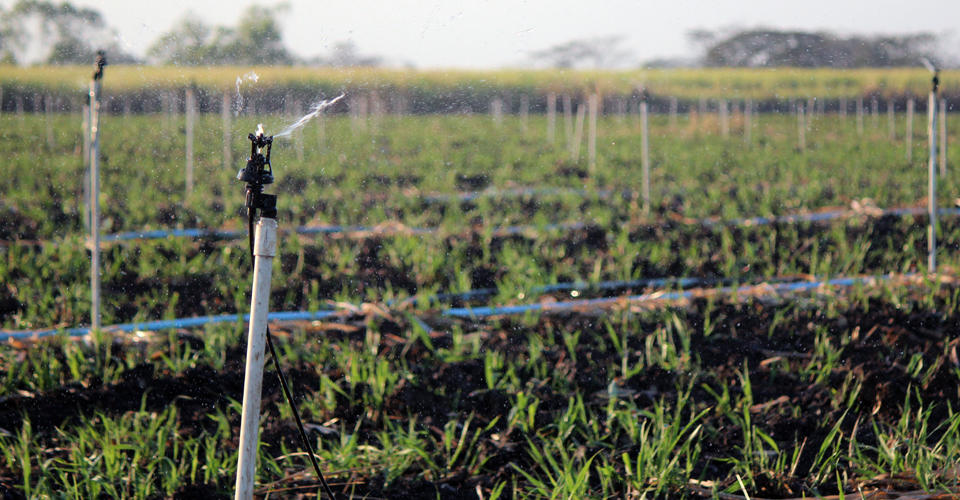The Dietary Value and Positive Effects of Sugarcane Product
The Trip of Sugarcane: From Harvest to Everyday Products
The trip of sugarcane is a complex process that starts with careful growing and finishes in a range of products that penetrate our daily lives. As we discover the various elements of sugarcane's journey, its duty in sustainability and the wider implications for our atmosphere come into sharper emphasis.
Cultivation of Sugarcane
The farming of sugarcane is an essential agricultural procedure that needs details environmental problems and management methods. Optimal development takes place in subtropical and exotic regions where temperature levels range in between 20 ° C and 32 ° C. Adequate rainfall or irrigation is essential, as sugarcane prospers in wet soil with well-drained problems (sugarcane product). Soil high quality significantly influences return; hence, farmers frequently perform dirt examinations to determine nutrient requirements
Growing typically takes place in rows, utilizing stem cuttings recognized as setts, which are planted flat. This approach helps with effective collecting and makes best use of sunlight exposure. Plant rotation and intercropping are recommended methods to improve dirt fertility and lower pest invasions. Additionally, farmers utilize incorporated pest management techniques to reduce chemical inputs while making sure healthy and balanced plant growth.
Timely application of these plant foods can substantially improve sugar returns. Generally, successful sugarcane farming hinges on a mix of environmental stewardship, critical planning, and recurring monitoring methods.
Harvesting Methods
Successful sugarcane growing culminates in the gathering stage, which is critical for taking full advantage of yield and making certain quality. The timing of the harvest is critical; sugarcane is usually collected when sucrose levels optimal, typically between 10 to 18 months after growing. This period differs based upon climate, dirt kind, and sugarcane variety.
Collecting methods can be generally categorized into guidebook and mechanical methods. Hands-on harvesting is labor-intensive, counting on experienced employees who utilize machetes to reduce the stalks short. This method enables discerning harvesting, where just the ripest canes are chosen, therefore improving general sugar content.
Alternatively, mechanical harvesting has gotten popularity due to its performance and cost-effectiveness. Specialized farmers geared up with cutting knives and conveyor systems can refine huge locations rapidly, dramatically reducing labor costs. This technique might lead to the addition of premature walking sticks and a possible decline in sugar top quality.

Despite the technique utilized, guaranteeing that harvested canes are transferred rapidly to processing centers is crucial. Motivate managing reduces putridity and preserves the honesty of the sugarcane, establishing the phase for optimal handling.
Handling Techniques
Processing sugarcane entails a number of essential actions that change the harvested stalks into useful products, primarily sugar and molasses. The first stage is washing the walking cane to remove dirt and particles, complied with by the removal of juice with crushing or milling. This process usually employs hefty rollers that break the walking cane fibers to launch the sweet fluid included within.
As soon as the juice is drawn out, it goes through clarification, where contaminations such as soil fragments and bagasse are eliminated. This is frequently attained by adding lime and warming the juice, enabling sedimentation. The made clear juice is then focused through dissipation, where water content is minimized, resulting in a thick syrup.

Ultimately, the handling of sugarcane not just produces sugar and molasses however additionally lays the groundwork for numerous by-products, which will be discovered in subsequent discussions.
Products Derived From Sugarcane
Sugarcane is a flexible plant that yields a large selection of products beyond just sugar and molasses. Among the key byproducts are ethanol and biofuels, which have acquired prestige as renewable resource sources. Ethanol, created via the fermentation of sugarcane juice, functions as an alternate to nonrenewable fuel sources and is frequently mixed with gasoline to create cleaner-burning gas, decreasing greenhouse gas exhausts.
In addition, sugarcane is a significant source of bagasse, the fibrous residue staying after try this site juice extraction. Bagasse is used in various applications, including the production of paper, eco-friendly product packaging, and as a biomass gas for power generation. Its usage not just minimizes waste yet also boosts the sustainability of sugarcane handling.
Moreover, sugarcane-derived items reach the food market, where it serves as an all-natural flavor representative and sugar in different culinary applications. In the world of cosmetics, sugarcane removes are integrated into skincare items because of their natural exfoliating properties.
Ecological Effect and Sustainability
The growing and handling of sugarcane have considerable implications for ecological sustainability. This plant requires significant water sources, commonly resulting in depletion of neighborhood water materials and affecting bordering environments. Additionally, making use of fertilizers and chemicals in sugarcane farming can cause soil degradation and river pollution, posturing dangers to biodiversity.

Sustainable sugarcane farming additionally advertises dirt health with plant rotation and decreased husbandry, enhancing carbon sequestration. The adoption of these methods not only supports ecological honesty but likewise enhances the strength of farming communities against climate adjustment.
Final Thought
In recap, the trip of sugarcane encompasses various phases from growing to handling, inevitably resulting in a broad range of items. The importance of sugarcane expands past plain sugar, adding to renewable resource through ethanol manufacturing, lasting product packaging using bagasse, and natural removes for cosmetics. This complex plant plays an essential role in both dietary enrichment and environmental sustainability, highlighting its significance in modern farming and commercial techniques.
Effective sugarcane farming finishes in the gathering stage, which is essential for making best use of return and making certain quality. The timing of the harvest is important; sugarcane is usually gathered when sucrose levels top, typically between 10 to 18 months after growing.Handling sugarcane includes a number of crucial steps that transform the harvested stalks right into functional products, mainly sugar and molasses.Sugarcane is a versatile plant that produces a broad array of items past simply sugar and molasses. Furthermore, the use of plant foods and chemicals in sugarcane farming can result in soil destruction and river contamination, posing threats to biodiversity.